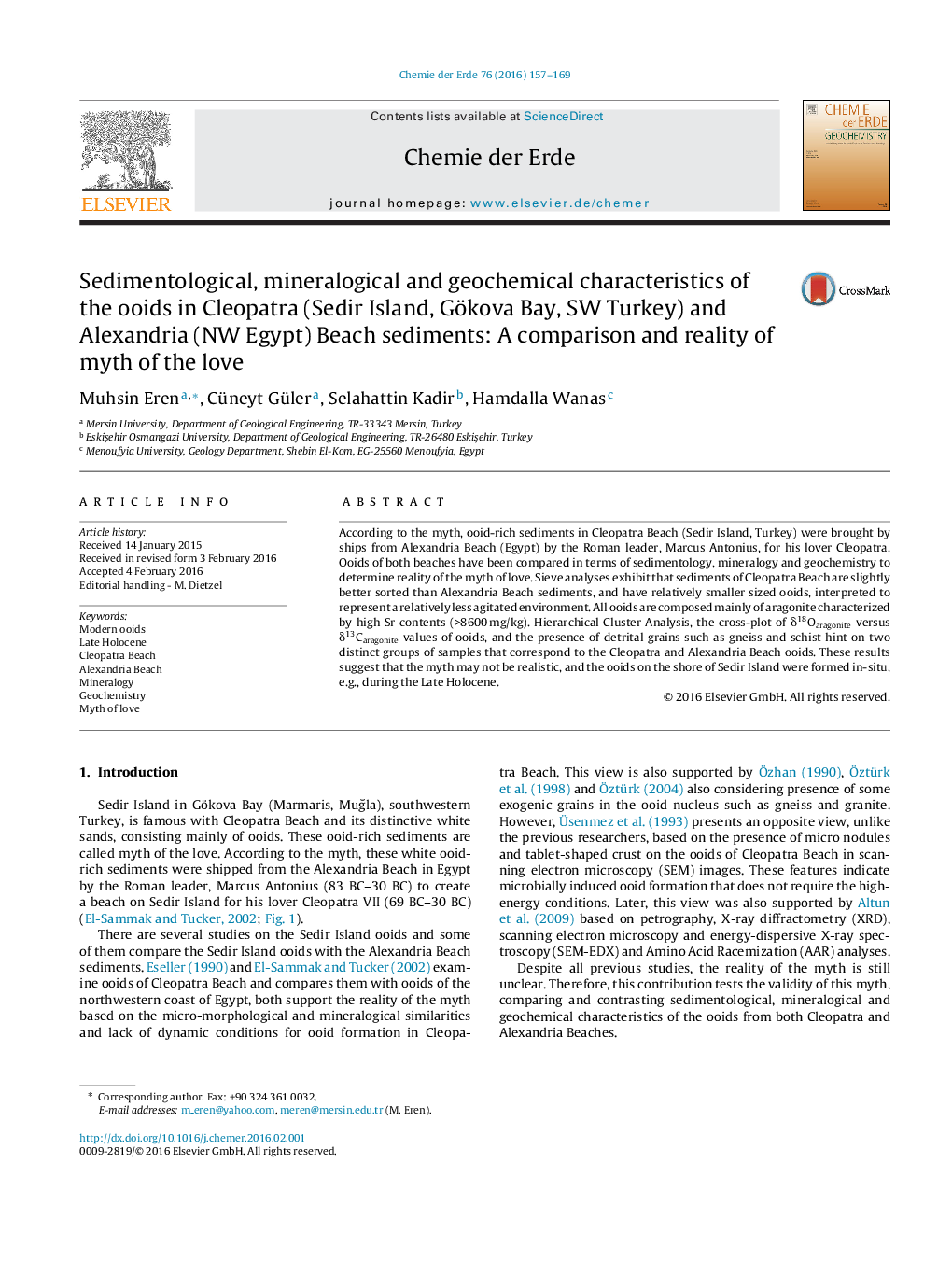| Article ID | Journal | Published Year | Pages | File Type |
|---|---|---|---|---|
| 4406801 | Chemie der Erde - Geochemistry | 2016 | 13 Pages |
According to the myth, ooid-rich sediments in Cleopatra Beach (Sedir Island, Turkey) were brought by ships from Alexandria Beach (Egypt) by the Roman leader, Marcus Antonius, for his lover Cleopatra. Ooids of both beaches have been compared in terms of sedimentology, mineralogy and geochemistry to determine reality of the myth of love. Sieve analyses exhibit that sediments of Cleopatra Beach are slightly better sorted than Alexandria Beach sediments, and have relatively smaller sized ooids, interpreted to represent a relatively less agitated environment. All ooids are composed mainly of aragonite characterized by high Sr contents (>8600 mg/kg). Hierarchical Cluster Analysis, the cross-plot of δ18Oaragonite versus δ13Caragonite values of ooids, and the presence of detrital grains such as gneiss and schist hint on two distinct groups of samples that correspond to the Cleopatra and Alexandria Beach ooids. These results suggest that the myth may not be realistic, and the ooids on the shore of Sedir Island were formed in-situ, e.g., during the Late Holocene.
